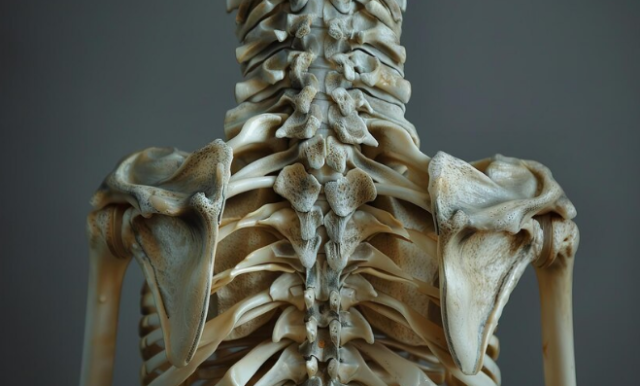
Cauda Equina Syndrome (CES) is a rare but serious condition that affects the bundle of nerves at the lower end of the spinal cord known as the cauda equina. This condition occurs when the cauda equina becomes compressed, leading to a variety of symptoms that can range from mild to severe. It is crucial to recognize the urgency of CES and understand the emergency symptoms associated with this condition to seek immediate medical attention. In this article, I will provide an overview of CES, its causes, and the red flags that should not be ignored.
Understanding the Anatomy of the Cauda Equina
To comprehend the urgency of CES, it is essential to understand the anatomy of the cauda equina. The cauda equina is a collection of nerves located at the base of the spinal cord, resembling a horse’s tail. These nerves are responsible for transmitting sensory and motor signals to and from the lower part of the body. When the cauda equina becomes compressed, it can result in a range of symptoms, including pain, numbness, weakness, and loss of bladder or bowel control.
Common Causes of Cauda Equina Syndrome
CES can be caused by various factors, including herniated discs, spinal tumors, spinal infections, spinal stenosis, or trauma to the spine. In most cases, CES is a result of a herniated disc, which occurs when the soft cushioning material within the spinal disc pushes out through a crack in the disc’s outer shell. This herniation can put pressure on the cauda equina, leading to compression and subsequent symptoms.
Recognizing the Urgency: Emergency Symptoms of Cauda Equina Syndrome
It is crucial to recognize the emergency symptoms of CES to ensure prompt medical intervention. Some of the red flags to look out for include:
- Sudden and severe lower back pain: If you experience an abrupt onset of intense lower back pain, especially accompanied by leg pain or weakness, it could be a sign of CES. This pain may radiate to one or both legs and may worsen with movement or straining.
- Loss of bladder or bowel control: Inability to control urinary or bowel function is a significant red flag for CES. If you suddenly develop urinary incontinence or difficulty passing urine, or if you experience fecal incontinence or an inability to control bowel movements, seek immediate medical attention.
- Numbness or weakness in the lower extremities: CES can cause a loss of sensation or weakness in the legs, feet, or toes. If you notice a sudden onset of numbness, tingling, or weakness in your lower extremities, it could be a sign of CES and should not be ignored.
Seeking Immediate Medical Attention
If you experience any of the emergency symptoms mentioned above, it is crucial to seek immediate medical attention. Delaying treatment can lead to permanent damage or disability. Contact your healthcare provider or visit the nearest emergency room as soon as possible. Prompt medical intervention can help alleviate symptoms, prevent further damage, and improve the chances of a successful recovery.
Diagnostic Tests for Cauda Equina Syndrome
To confirm the diagnosis of CES, your healthcare provider may order various diagnostic tests. These tests may include:
- Magnetic Resonance Imaging (MRI): An MRI scan can provide detailed images of the spine, allowing healthcare professionals to identify any compression or damage to the cauda equina.
- Electromyography (EMG): EMG is a test that measures the electrical activity of muscles and nerves. It can help determine the extent of nerve damage and assess the severity of CES.
- Computed Tomography (CT) Scan: CT scans can provide cross-sectional images of the spine, helping identify any structural abnormalities or lesions that may be causing CES.
Treatment Options for Cauda Equina Syndrome
The treatment for CES depends on the underlying cause and the severity of the condition. In most cases, emergency surgery is required to relieve the pressure on the cauda equina and prevent further damage. The surgical procedure aims to remove the source of compression, such as a herniated disc or tumor, and restore normal function to the affected nerves. In some instances, non-surgical interventions, such as medication and physical therapy, may be recommended to manage symptoms and aid in recovery.
Rehabilitation and Recovery after Cauda Equina Syndrome
After undergoing surgery for CES, a comprehensive rehabilitation program is crucial for optimal recovery. This program may include physical therapy, occupational therapy, and pain management techniques. The goal of rehabilitation is to restore strength, mobility, and functionality to the affected areas and improve overall quality of life. The duration and intensity of the rehabilitation program will vary depending on the individual’s specific needs and the severity of the CES.
Conclusion and the Importance of Early Recognition
In conclusion, recognizing the urgency of Cauda Equina Syndrome is of utmost importance to ensure timely medical intervention. By understanding the anatomy of the cauda equina, common causes of CES, and the emergency symptoms associated with this condition, individuals can seek immediate medical attention when necessary. Remember, if you experience sudden and severe lower back pain, loss of bladder or bowel control, or numbness and weakness in the lower extremities, do not ignore these symptoms. Contact your healthcare provider or seek emergency medical care to prevent further damage and increase the chances of a successful recovery.
Looking for relief from severe back pain from a past injury or failed surgery? Dr Rosenstein is the leading spinal neurosurgeon in Arlington, Texas. He focuses on smooth and successful surgeries with positive outcomes. Call today for a consultation.
